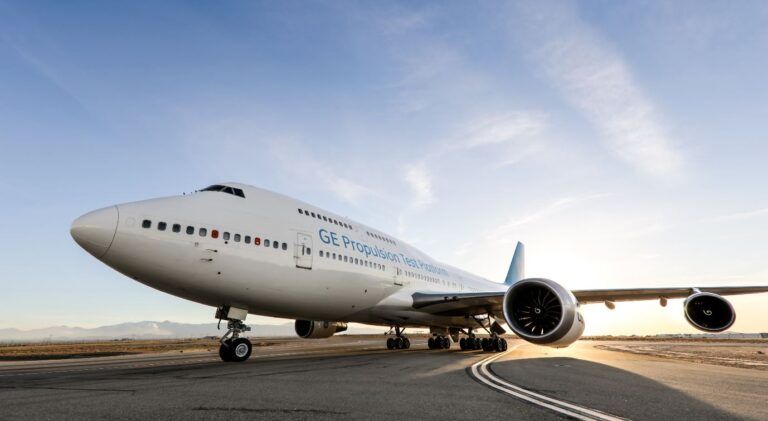NASA is performing flight tests to help improve understanding of contrails that will use new test methods and technologies including LiDAR technology.
Icy contrails can be created when airplanes fly through cold, humid air and are believed to have a warming climate impact.
The week-long flight test campaign for NASA’s Contrail Optical Depth Experiment (CODEX)started on November 18 from Virginia, USA.
NASA Langley Research Center’s G-III aircraft will follow GE Aerospace’s Flying Test Bed in the sky and scan the aircraft wake with Light Detection and Ranging (LiDAR) technology. This will advance the use of LiDAR by NASA to generate three-dimensional imaging of contrails to better characterize how contrails form and how they behave over time.
GE Aerospace said the flight testing represents new operating methods for its 747 Flying Test Bed, which will be used on future programs such as its Open Fan propulsion system being developed through CFM International’s Revolutionary Innovation for Sustainable Engines (RISE) program.
Arjan Hegeman, general manager of future of flight technology for GE Aerospace said, “Understanding how contrails act in-flight with the latest detection technology is how we move innovation forward. These tests will provide critical insight to advance next generation aircraft engine technologies for a step change in efficiency and emissions.”
The CODEX program is supporting aviation industry research efforts to better understand contrails and enable new technology development that can reduce non-CO2 emissions.
Dr Rich Wahls, manager of NASA’s Sustainable Flight National Partnership said, “NASA is advancing the scientific understanding of contrails to improve our confidence in future operational contrail management decisions that consider overall climate impact and economic trades. We are thrilled to once again work with our collaborator, GE Aerospace, on this first-of-its-kind flight experiment.”
Weather prediction
In addition to Codex, NASA, the German Aerospace Center (DLR), and contrails analysis company Satavia are collaborating on atmospheric forecasting to identify conditions favorable for studying contrail formation.
DLR will help predict the altitude and dimensions of contrail-forming regions and their evolution, required to guide the aircraft into fast-moving contrail regions. After the flight tests, the contrail model can be validated with LiDAR observations to advance contrail prediction capabilities.
Data from the Codex flight testing will help SATAVIA – which offers a contrail forecasting and management service – validate and improve its numerical weather prediction capability used to forecast contrail formation in ice super saturated regions. Aerospace Carbon Solutions, a GE Aerospace business, acquired SATAVIA earlier this year.





